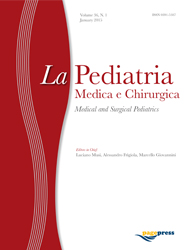Articles
30 June 2013
Vol. 35 No. 3 (2013)
0
0
0
0
 Smart Citations
Smart Citations0
0
0
0
Citing PublicationsSupportingMentioningContrasting
See how this article has been cited at scite.ai
scite shows how a scientific paper has been cited by providing the context of the citation, a classification describing whether it supports, mentions, or contrasts the cited claim, and a label indicating in which section the citation was made.
High Flow Nasal Cannulae in preterm infants
How to Cite
High Flow Nasal Cannulae in preterm infants. (2013). La Pediatria Medica E Chirurgica, 35(3). https://doi.org/10.4081/pmc.2013.44
PAGEPress has chosen to apply the Creative Commons Attribution NonCommercial 4.0 International License (CC BY-NC 4.0) to all manuscripts to be published.







